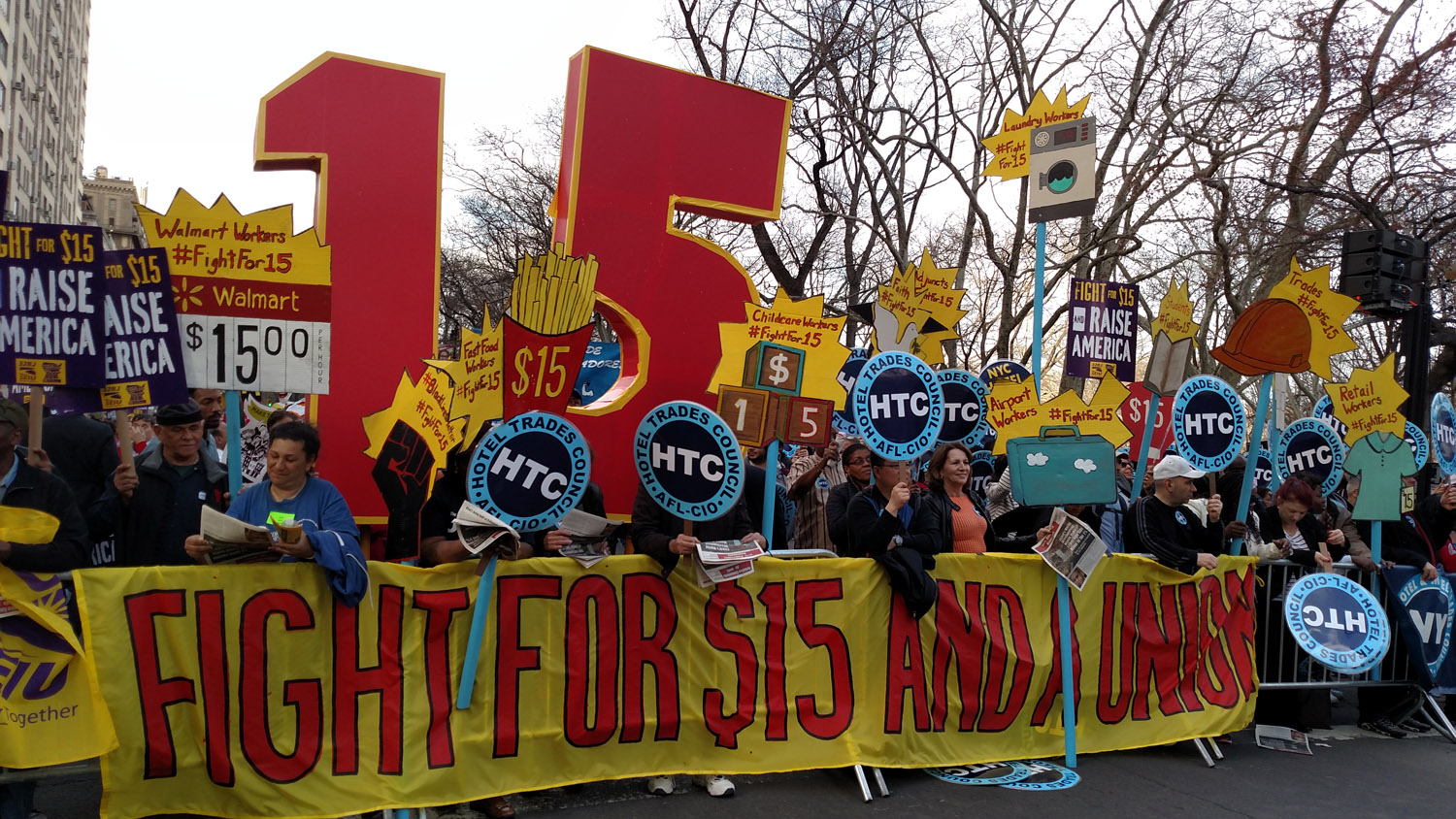Like many of the topical issues in our country, the fight for raising minimum wage has been a battle between two radically opposing viewpoints. There are advocates who deem higher minimum wage as their right as an American citizen and the opponents claim that a higher minimum wage would only push the country further into financial disarray.
On Tuesday, Nov. 10, minimum wage raise advocates earned a significant victory as New York Governor Andrew Cuomo revealed that he would establish a minimum wage of $15 per hour. Cuomo’s plan, which will not go into effect until 2018, marks the first time a governor has supported minimum wage increases for its public employees to such a high amount.
The governor made the announcement at a Fight For $15 rally in Lower Manhattan, stating that the decision was made to combat economic inequality. At the rally, Cuomo blamed fast-food franchises like McDonald’s for only further perpetuating this economic inequality. Cuomo argued that the state’s current minimum wage of $8.75 per hour or $18,000 a year was not enough to satisfy the economic needs of many of the employees in the state.
“If you work full time, you should have a decent lifestyle for you and your family,” Cuomo said. “You can’t pay for housing and food and clothing on $18,000 a year. And that’s what today is all about.”
Cuomo has been a long-time supporter of raising the minimum wage in New York, managing to get it raised from $7.25 to its current rate of $8.75 back in 2013. This past March, Cuomo advocated for the wage to be raised to $11.50 in New York City and $10.50 for every other city in the state. Starting in July, Cuomo began to up the ante even further by proposing that the wage prices be lifted all the way to $15 per hour.
Cuomo’s announcement was met with an enthusiastic response from both Fight For $15 members and labor leaders like George Gresham, president of the nation’s largest healthcare workers union, 1199SEIU. Gresham said this decision could benefit tens of thousands of the union’s home-care workers who are not viewed as state employees.
Also in favor of the decision to raise minimum wage is Kelly Vlahakis-Hanks, the chief executive of Earth Friendly Products. Employees who partake in the actual production of Earth Friendly Products earn $17 per hour, which is twice what the current federal minimum wage is at $7.25. Vlahakis-Hanks claimed the per hour higher minimum wage has helped the company bring in a larger number of employees and reduced training costs. She specifically claimed that current job growth exceeded five percent compared to the same period in the previous year.
On the other side of the coin, many have claimed that a statewide increase in minimum wage for all employees, public and private, would have severe consequences on the state’s economy and employment rate.
These opponents argue that the most significant effects of minimum wage increases are a raise in the prices of products, the shutdown of smaller businesses and ultimately higher unemployment rates.
This past July, a study released by Purdue University suggested that paying fast-food restaurant employees $15 per hour could lead to a sales price increase of 4.3 percent. According to a research paper recently released by the Empire Center for Public Policy and the American Action Forum, enforcing a statewide minimum wage of $15 per hour would cost New York an estimated 200,000 jobs — which includes 95,600 in New York City.
What to do regarding statewide minimum wage is not a black-and-white topic that you can give a clear cut answer to. Minimum wage affects certain groups of people in different ways depending on whether or not it increases or decreases.
Increasing minimum wage is beneficial to certain employees of the state, but it also forces companies to inflate prices and lay off employees to afford the higher wage payments. This is a scenario where it is guaranteed that there will be ramifications for at least one group involved in the issue.
An optimistic outcome would be that legislators and political officials could think of a way to raise minimum wage without putting companies in the position of having to lay off any of their employees. However, Cuomo has made up his mind and all the people of New York City can do is hope that, when 2018 comes, the right decision has been made.




